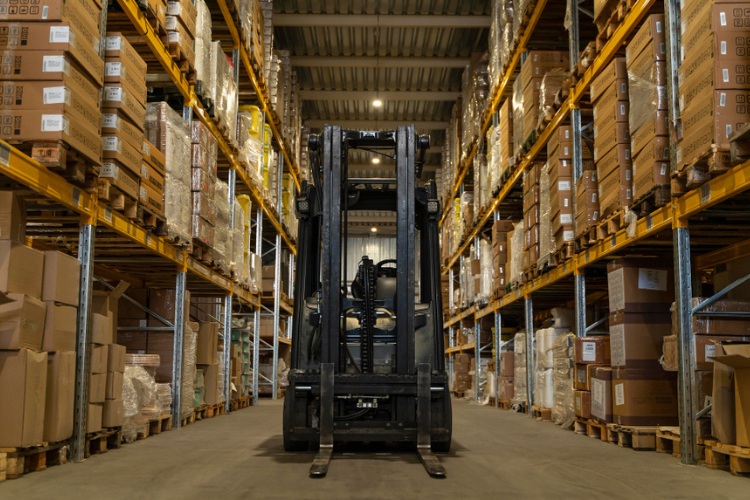Table Of Contents
Inside Liftingequipmentstore.Us: How Professionals Are Upgrading Their Gear In 2025
If you work in construction, warehousing, manufacturing, shipping—pretty much anywhere heavy stuff needs moving—you’ve probably noticed things are changing.
Fast. In 2025, it’s not enough to just have gear that “gets the job done.” Now it’s about lifting equipment that’s smart, safe, reliable, and, ideally, makes your life easier.
The people making those decisions aren’t just shopping around aimlessly anymore. They want suppliers who understand their industry and who offer more than a generic catalog.
That’s why more pros are heading to specialized platforms instead of the usual big-box sites. One name that keeps coming up this year?
LiftingEquipmentStore.us—a spot that’s earned its rep as a go-to for upgrading without second-guessing every purchase.
The Evolving Demands Of Modern Lifting Equipment
I will be very honest with you here, it doesn’t matter if you’re running a massive plant or managing a busy dock.
Your goal is the same. You have to move heavy loads quickly and keep people safe. Additionally, you need to ensure that you avoid downtime.
But in 2025, doing that well means working smarter, not just harder. Well, this is a silver lining!
The “must-have” list looks a little different now:
- Tech you can trust – gear with load sensors, remote controls, and smart monitoring is becoming the norm.
- Strict compliance – OSHA and ANSI aren’t loosening up; if anything, the bar keeps getting higher.
- Custom fit – no more one-size-fits-all. Modular cranes, adjustable rigging, and tailored builds are the way forward.
It’s not just about lifting weights anymore—it’s about raising the standards while you’re at it.
Why Professionals Are Shifting To Specialized Platforms For Lifting Equipment?
Sure, you can scroll through a giant e-commerce site and find a hundred different hoists. But will you get real specs?
Also, I will ask you another very important question. Will anyone answer your “will this actually work?” question at 8:30 on a Tuesday? Probably not.
That’s why places like LiftingEquipmentStore.us are pulling ahead. They’re not just selling stuff—they’re helping you pick the right stuff. Their edge?
- Detailed product info you don’t have to hunt for.
- Real humans who actually know the industry.
- Brands that have already been tested in the field.
- Gear built to U.S. industrial and safety standards.
When downtime costs you thousands and liability is always lurking, guessing isn’t an option.
A Closer Look At What Sets Liftingequipmentstore.Us Apart
This isn’t one of those sites where you scroll through 27 almost-identical products. The range is wide, but every piece has a reason to be there.
Additionally, you need chain hoists, cranes, clamps, and forklift attachments—from brands you’ve heard of: CM, Vestil, Harrington, and others.
Each product page comes with specs, usage notes, and add-on suggestions if you need them. It’s the kind of transparency procurement teams appreciate when they have to justify purchases to the higher-ups.
And if you’re unsure about compatibility or need something built to spec? Their tech team isn’t just reading off a sales script.
Also, they know load dynamics, OSHA regs, and the engineering behind the gear. That’s why people go back.
Top Gear Trends Professionals Are Embracing In 2025
As more professionals turn to platforms like liftingequipmentstore.us, clear trends are emerging in the types of equipment being prioritized
- Wireless load monitoring – real-time data that keeps crews safer and removes guesswork.
- Ergonomic manual hoists – lighter, smoother, less fatigue on operators.
- Electric winches with remotes – more control, less risk.
- Custom spreader beams and frames – built for the exact job instead of forcing the job to fit the gear.
It’s not just swapping old for new—it’s upgrading with intent.
How To Future-Proof Your Lifting Equipment In 2025?
Picking the right supplier is step one. After that:
- Keep tabs on what you’re lifting, how often, and in what conditions—your gear should match reality, not just theory.
- Train your crew. Even the smartest gear won’t save you if people don’t know how to use it right.
- Keep good records—inspections, performance logs, the works. Makes compliance way less of a headache.
- Treat your supplier like a partner. Ask for advice. Get custom solutions. Bulk order if you can.
What Should You Know To Start A Lifting Equipment Business?
Starting a lifting equipment business requires careful planning and attention to detail. Key areas to focus on include understanding the local market.
Also, you will get a good idea about safety regulations and the development of a strong brand identity.
Additionally, you’ll need to consider operational aspects like location and facility size. Oh wait! There is also the factor of staff allocations.
1. Identify Your Target Market
For starters, you must determine the specific types of lifting equipment and services your business will offer.
Then, you can move on to identify your potential clients, such as construction companies and industrial facilities.
Additionally, you need to do a thorough Research of existing lifting equipment businesses in your area.
Why so? It will help you to identify gaps in the market and opportunities for differentiation.
This should include your business goals, target market, and marketing strategies. Additionally, keep a check on financial projections and operational plans.
2. Check All The Operational Whereabouts
Select a location that is accessible to your target market, has adequate space for equipment storage and maintenance, and complies with zoning regulations.
Determine your funding needs and explore options such as loans, investors, or your personal savings.
Purchase or lease a range of lifting equipment. This must be suitable for your target market. It will ensure it meets safety standards and is well-maintained.
3. Keep A Track Of All The Legal Obligations
Choose the appropriate legal structure for your business, whether it’s a sole proprietorship, partnership, LLC, or another type, and register it with the relevant authorities.
Research and secure all the necessary licenses and permits for operating a lifting equipment business. This includes safety certifications.
Also, you can prioritize safety in all your operations by
- Following relevant safety standards
- Training your staff
- Conducting regular equipment inspections
Lifting Equipment Is Becoming An Important Sector
Upgrading lifting gear in 2025 isn’t about replacing something that’s worn out—it’s about getting ahead. It’s about safer crews, faster jobs, and less stress when inspectors show up.
So, we have platforms like LiftingEquipmentStore.us that make it easier by combining top-tier products with expert guidance.
Additionally, it provides such a level of service that you just don’t get from a generic online store.
Also, whether you’re kitting out a brand-new facility or updating the old faithful gear you’ve had for years, this is the year to raise your standards, literally.
And with the right partner, you’ll know every lift is as safe and efficient as it can be.
Read More:














